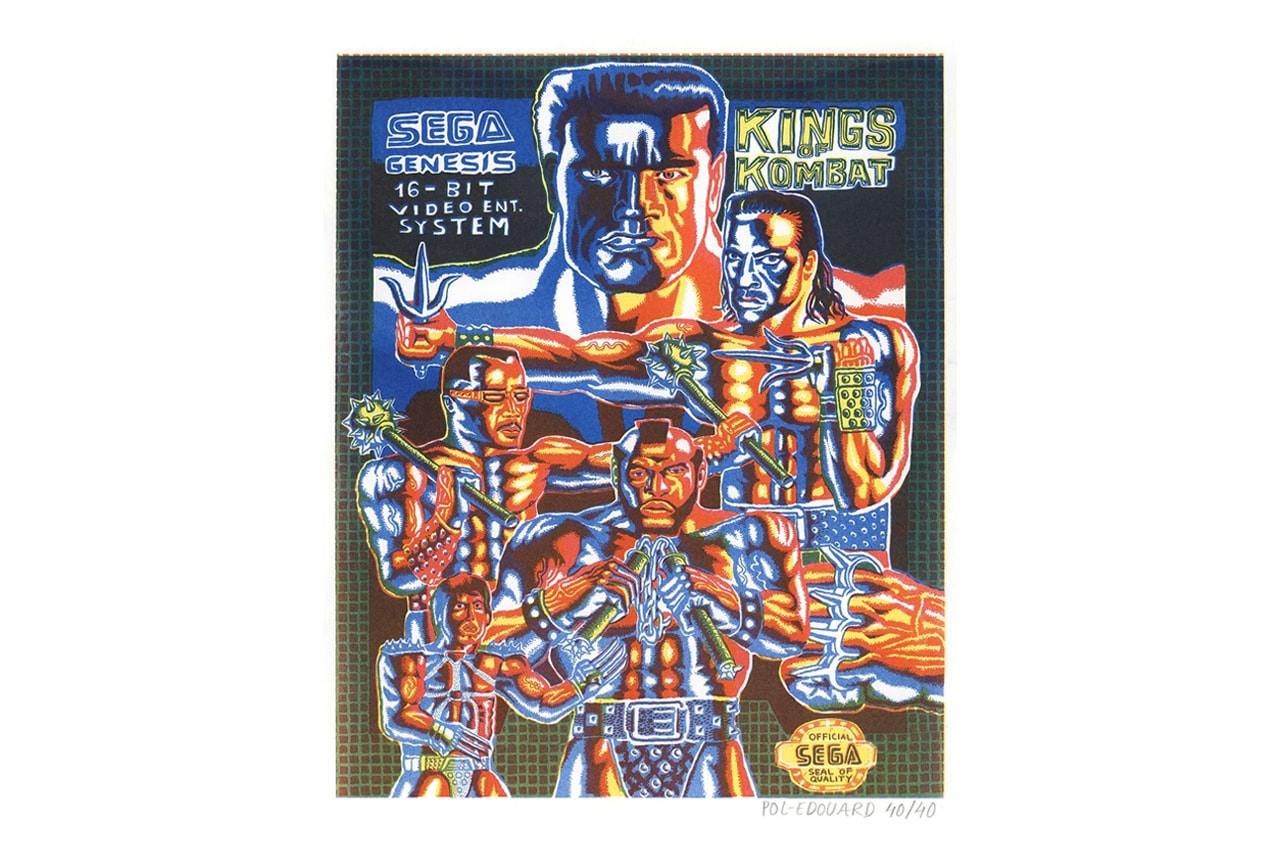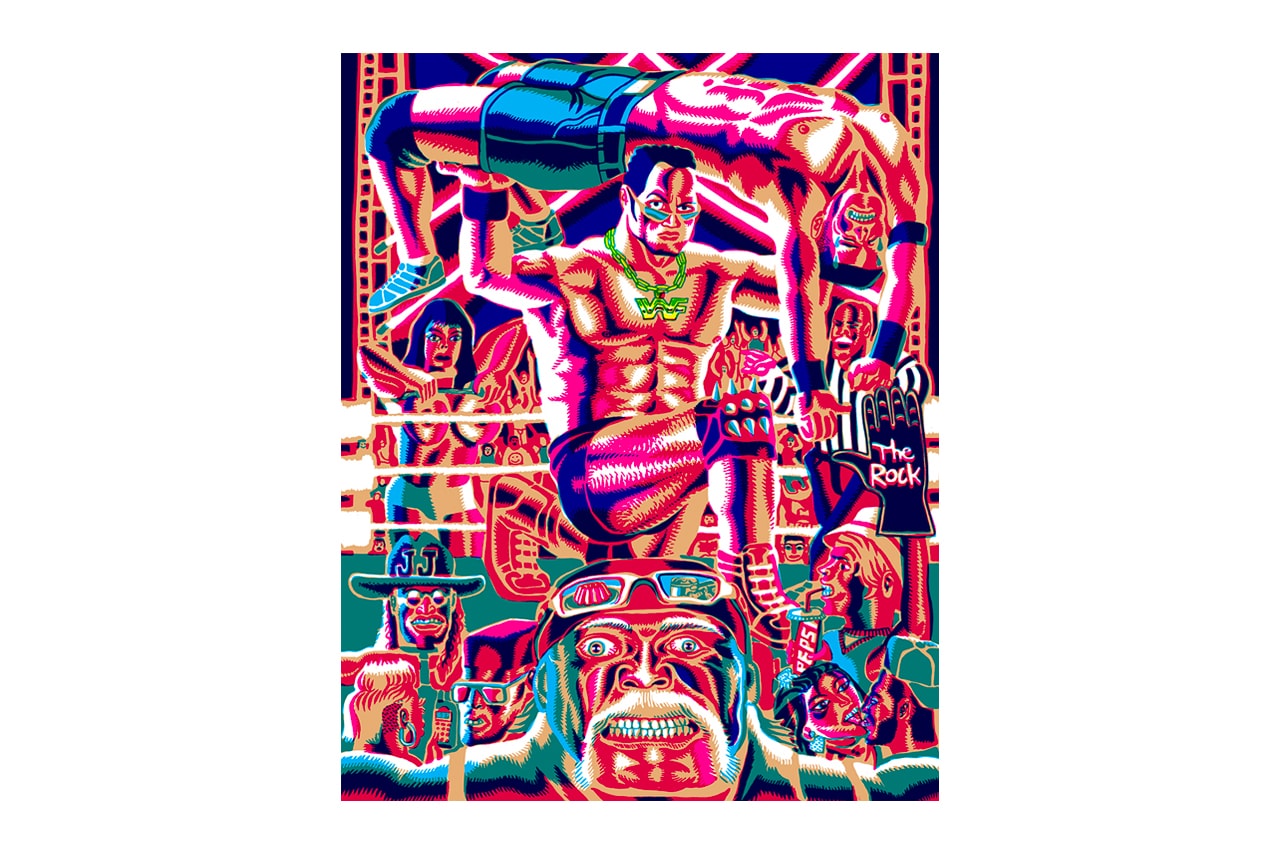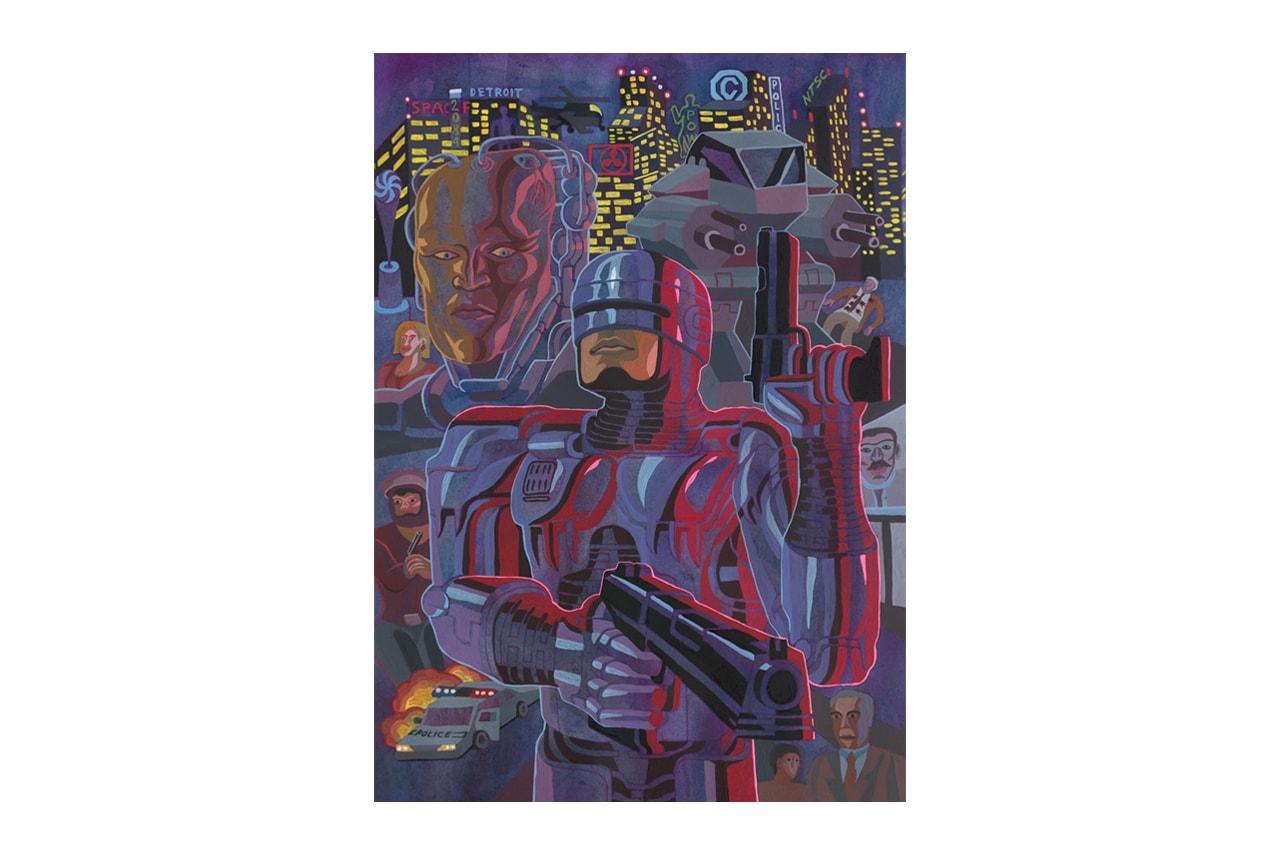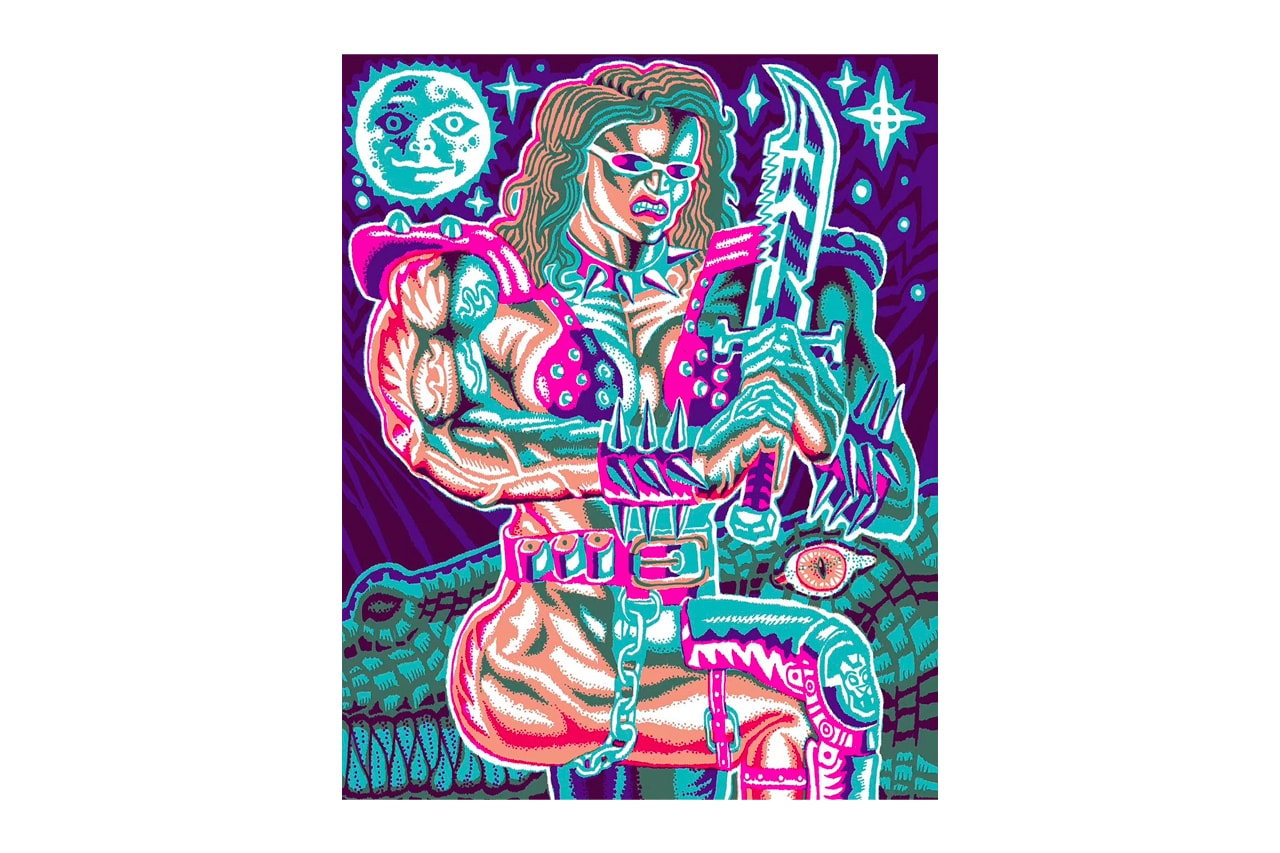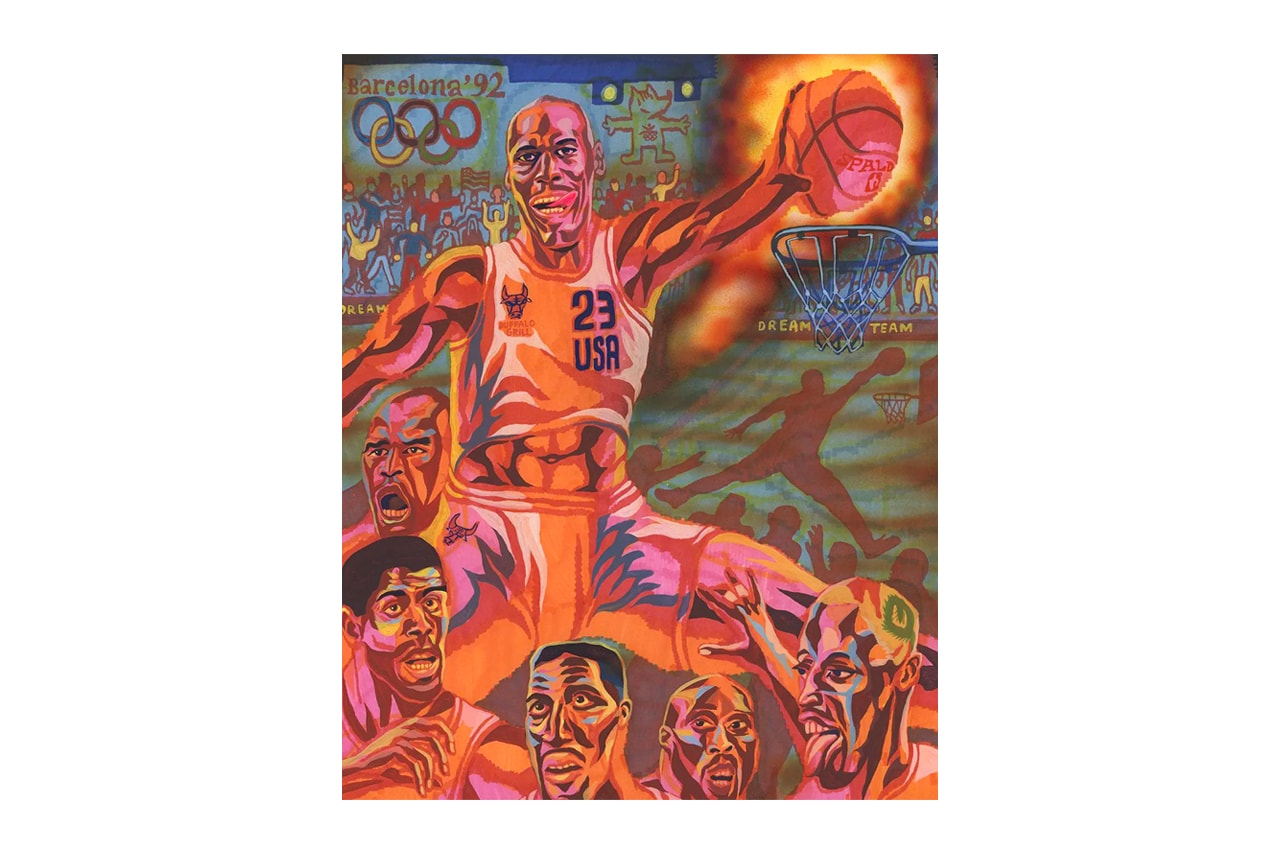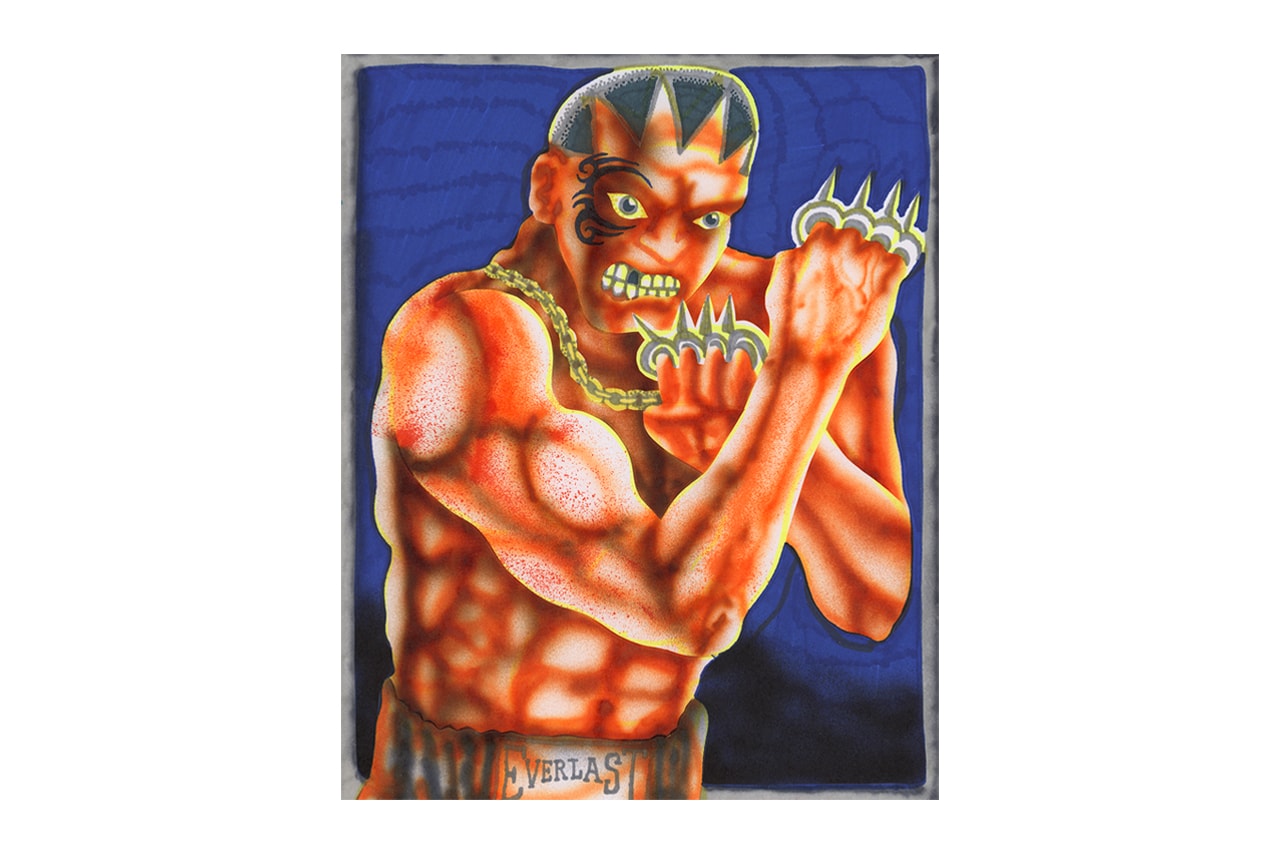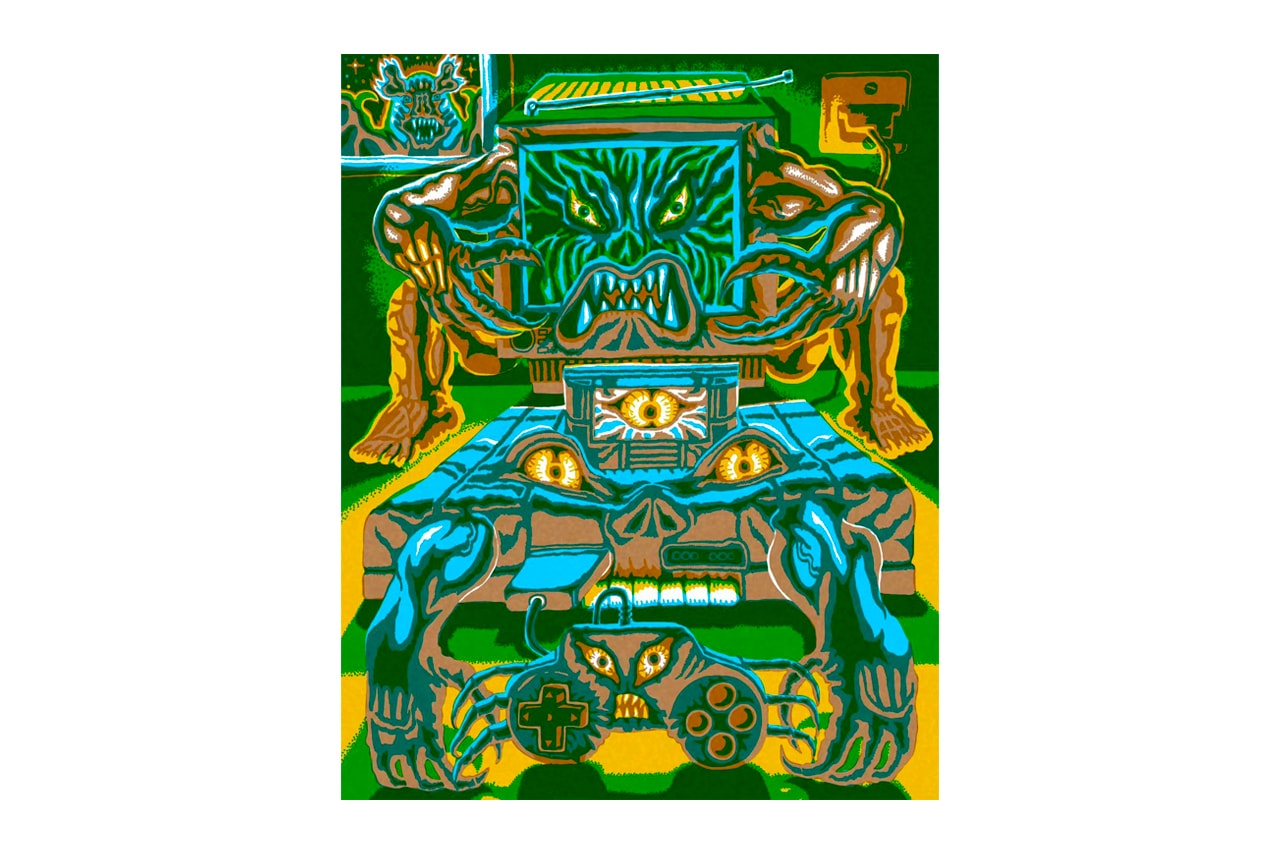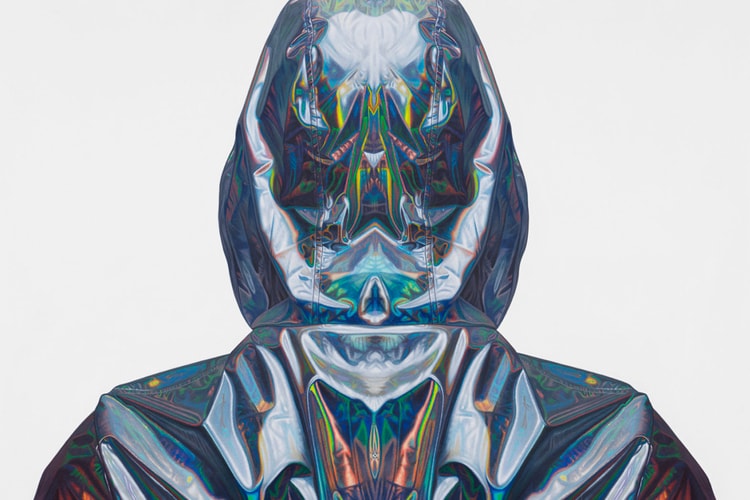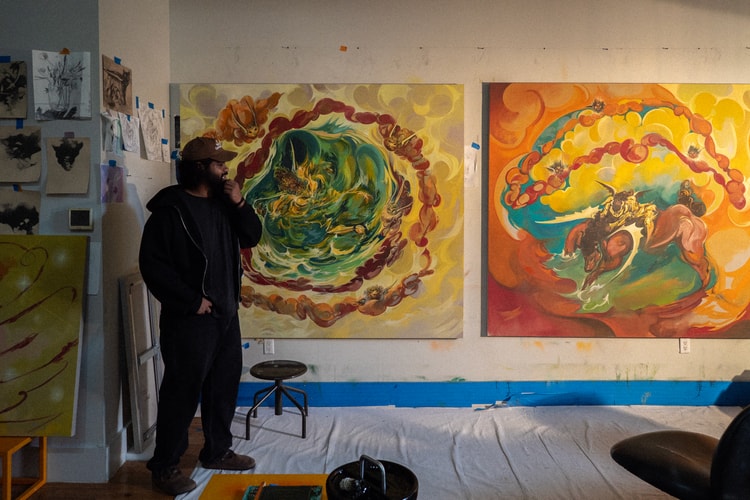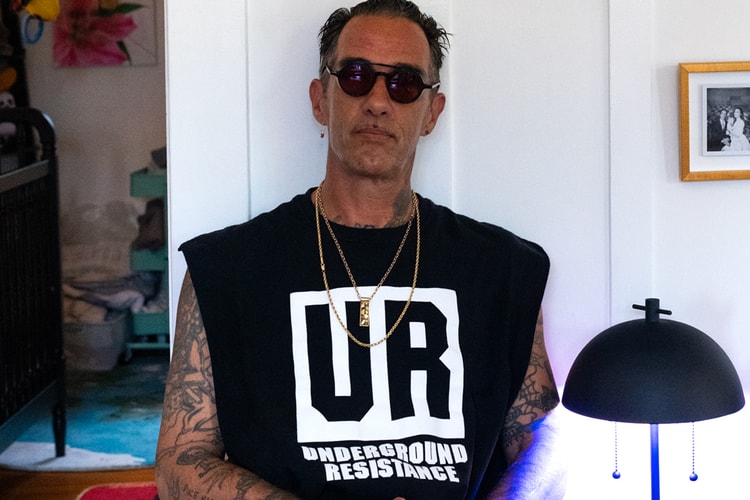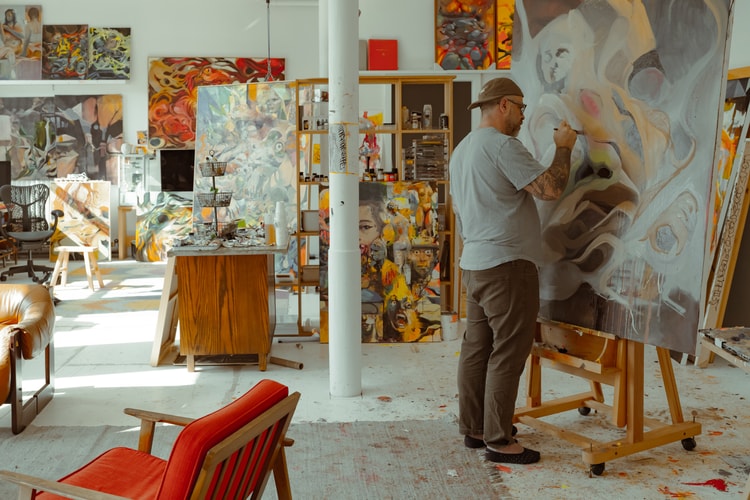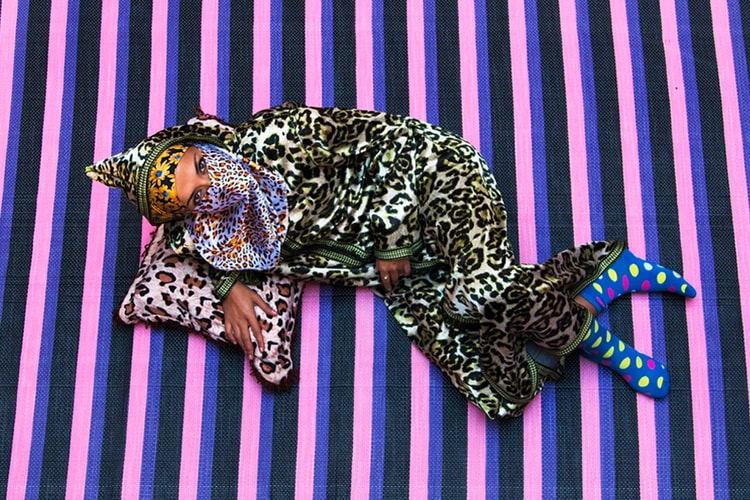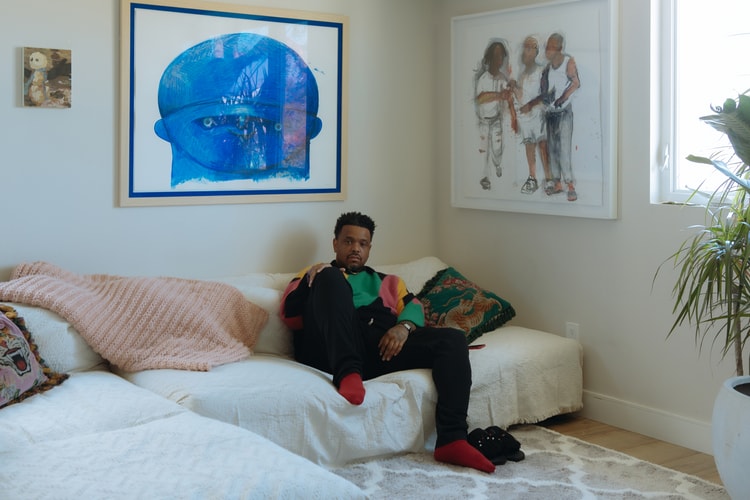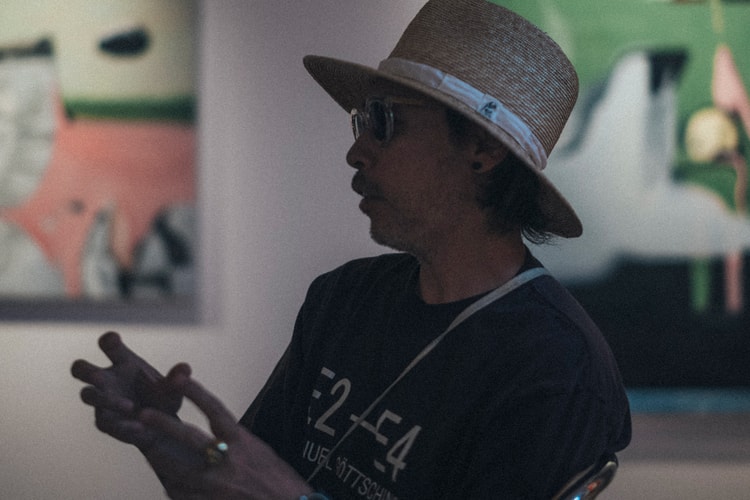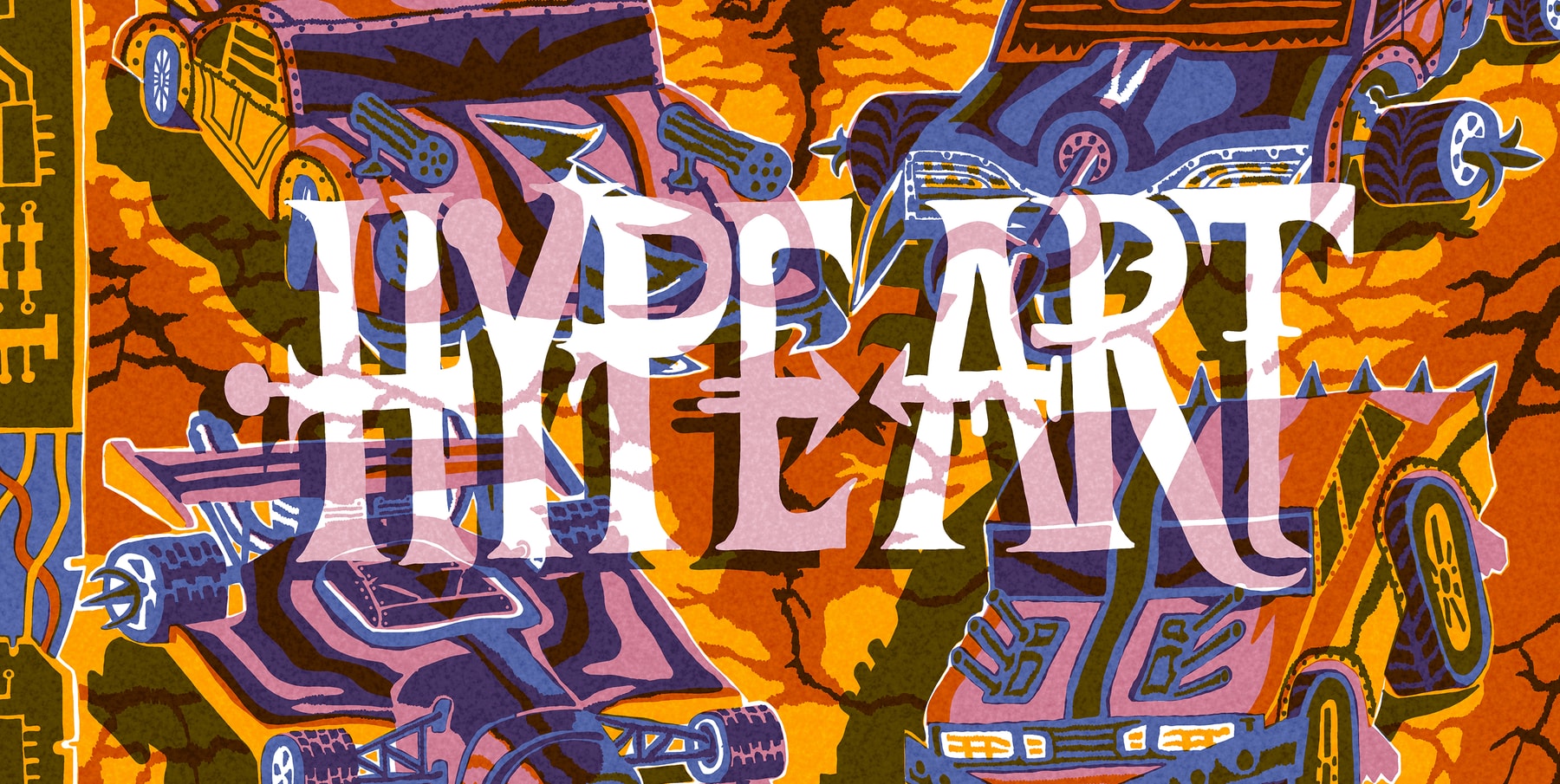

The end times have become a recurrent theme within the media landscape — from climate angst to socio-political unrest. The notion of the apocalypse (and the beings who live to survive it) is nothing new, of course. In fact, the prophesying of such events has been the topic of discourse going back millennia. “When I think of a post-apocalyptic world, I draw inspiration from antiquity because the mindset of people then is very close to our own,” French artist Pol-Edouard tells Hypeart.
Based in Paris, Pol’s dystopian scenes often pit characters like Blade, Terminator and Xena in an a**-kicking showdown for survival. Largely made using marker on paper, there is a quality about his work that lends itself to the originals — namely that glitchy, retro-futuristic vibe that has become so emblematic of the ‘80s and ‘90s — but done so in a way that feels hypnotic, dizzying, humorous and downright apocalyptic. “Just as painters in the past depicted mythology and the Bible, because those were common themes,” Pol tells Hypeart, “today, cinema constructs our shared universe.”
On top of his own toys and print releases, Pol has had his hand in a number of collaborations over the years, including a Terminator 2 capsule with Brain Dead. His work, much like the LA-based lifestyle label, is amusing but contains dense undertones ties to a number of sub-cultural communities, such as retro action films to apocalyptic video games, such as Final Fantasy VII, which will see the second part of its remake drop next month.
For the latest Pen & Paper, Hypeart spoke with the emerging illustrator to unearth his fascination with the end times, along the process of creating each of his saturated artworks.

“I draw inspiration from antiquity because the mindset of people then is still very close to our own.”
What was your earliest introduction to art?
My kindergarten teacher was the daughter of an ‘outsider’ art collector, so her classes were heavily focused on painting and sculpture. I remember experimenting a lot with painting during that time: gouache painting, cutting and collage, and salt dough sculpture. It was such an introduction to what I would later do that once in high school for visual arts, I felt like I had already tried everything the teacher was proposing.
Sci-fi films show to be a constant source of inspiration within your work. Can you remember the first film that left a big impact on you? A particular scene?
The first sci-fi film I saw was Terminator on a small cathode-ray tube TV when I was 12. It wasn’t a specific scene that marked me, but rather the narrative and pace that told this futuristic story of artificial intelligence taking over humanity. I believe this film left an imprint on multiple generations, not just due to its anticipatory theme but also its visual appeal. Just as painters in the past depicted mythology and the Bible, because those were common themes — today, cinema constructs our shared universe.
Aside from film, where do you think your affinity from post- apocalyptic subject matter comes from?
When I think of a post-apocalyptic world, I draw inspiration from antiquity because the mindset of people then is still very close to our own, based on what I’ve read. I imagine that if everything is destroyed by a nuclear bomb, there will be a kind of return to the spirit of antiquity, probably with new beliefs and gods. It’s this idea that drives me to depict a return of the Amazons with motocross bikes instead of horses. In any case, I like to imagine it that way.
Along that same thought, what else would you say heavily influences the worlds you create on canvas?
I enjoy drawing and referencing what people of my generation share with me, so there’s cinema, but also video games. I spent a significant part of my youth following the evolution of consoles and games. Some had more impact than others. I particularly liked the visual universe of the early DOOM games, the humor of Duke Nukem, and the Elder Scrolls series. I continue to rediscover games I didn’t have the chance to play at that time.
“It’s important for me not to copy a photograph but to create my own version.”
Power, technology and humor are several themes you explicitly explore. How would you define your own practice? From the intensely saturated and fluorescent color palettes and the film references you repurpose to the messages behind your work?
I seek to make my childhood and adolescent memories visible by highlighting the elements that left an impression on me. That’s why it’s important for me not to copy a photograph but to create my own version. As for saturated colors, I would say it’s to bring strength to the visual and make it impactful in turn.
Blade, Terminator, G.I. Joe, Xena — who is your favorite character to draw?
I occasionally switch favorite characters. I did a lot of cyborgs as a tribute to Terminator, so I think it was time to move on. I like Blade, but I’m less of a fan of the films. I believe I’m transitioning from the aesthetics of the 1980s to the 2000s!
Walk us through your process — from your ideation and the materials you use to how you ultimately create an artwork?
The crucial moment of creation happens in my little notebook. I jot down a list of ideas that I keep for later. When I feel it, I choose the idea I like the most and work on the composition in the notebook. This phase can last between one and twenty sketches with very few details. Once I have one that I like, I go for the large format. I trace my sketch with a yellow marker and start with the background, then the character’s body, and finally, the face. I had a long phase of being stuck where I started with the face and was never satisfied. I kept restarting and never finished a drawing. Now, as I do the face last, it forces me to concentrate to avoid mistakes.
Can you describe your latest exhibition, TRIPLE IMPAKT, and the corresponding book you’re going to open this week in Marseille?
TRIPLE IMPAKT is an exhibition at the Dernier Cri studio. It brings together a large part of my drawings from recent years. There are many marker drawings and drawings where I mix felt-tip pen and airbrush. The themes addressed in the book and the exhibition are those I always particularly enjoy, such as cyborgs, armed women, etc.
Is there a story behind this particular series and how does your latest exhibition differ from your past work?
What’s interesting is that, parallel to the original drawings exhibited, I produced drawings for screen printing. These are not displayable as they are not on a single sheet but separated by color (one color per sheet). Then, through screen printing, layers can be superimposed to reveal the final drawing. It’s a project spanning over two years, and all these drawings are included in the book with the same name as the exhibition. I am juxtaposing my work on the original drawings with the screen-printed drawings from the book, created simultaneously.

“When I see the news, it feels like the world is mad and heading in the wrong direction.”
What are some bigger goals you aim to achieve as an artist? Perhaps dipping into a full comic or animated series?
Animation art was my teenage dream, and I directed my studies in that direction, but I don’t know if I really want to go back to it today. I enjoy working with my own hands on drawing. I find it hard to imagine leading a team to draw in my place. The goal now would be to create more large canvases and more complex scenes with numerous characters, similar to the painters I admire like Eugène Delacroix and Peter Paul Rubens, but with lighting and video projections.
What is your stance on AI?
I am both eager and fearful to see how far it will go and whether it will truly stop at some point. Personally, I am still stuck on the debate of original art versus digital art. I can’t form a clear opinion, and I think AI falls into the same debate. I enjoyed seeing the keyword “in a ‘80 dark fantasy” on YouTube; it was quite entertaining, but it doesn’t reveal the personality and history of those creating the content.
When you reflect on the current global state of affairs, are you ultimately hopeful in humanity?
When I see the news, it feels like the world is mad and heading in the wrong direction. But when I see my close ones, my friends, and the people I work with, I am very confident in humanity.
All artwork courtesy of Pol-Edouard for Hypeart.



